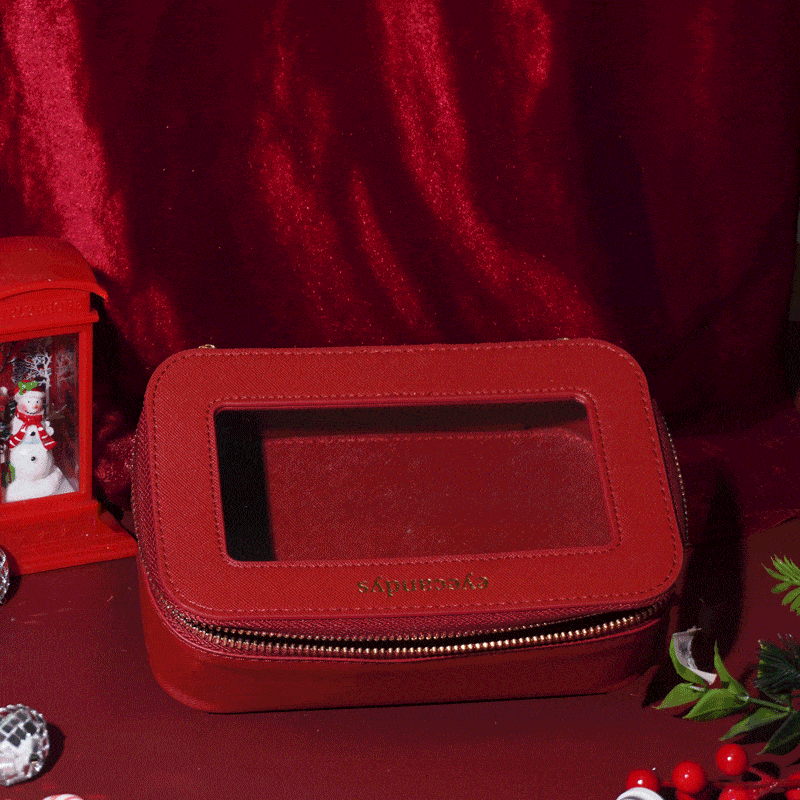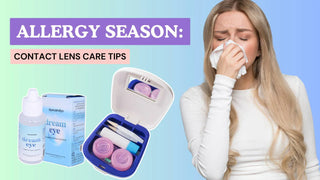Allergy Season: Contact Lens Care Tips for Clear, Comfortable Eyes
Spring might mean blooming flowers, sunny skies, and fresh starts—but if you wear contacts and suffer from allergies, it also means itchy, watery eyes and nonstop discomfort.
Pollen, dust, and other airborne irritants can wreak havoc on your eyes—especially if you’re wearing contact lenses. But don’t worry: you don’t have to give up your lenses for the season. With the right care and a few smart swaps, you can stay comfortable and clear-eyed, even during peak allergy season.
Here’s how to protect your vision, your contacts, and your sanity when allergy symptoms start creeping in.
Why Allergy Season Affects Contact Lens Wearers
During allergy season, pollen and other allergens can get trapped between your contact lenses and your eyes. Your body sees these particles as invaders, and releases histamines—chemicals that cause the classic symptoms:
-
Itchy or red eyes
-
Watery or dry eyes
-
Swollen eyelids
-
Burning or gritty sensations
Wearing contact lenses can intensify these symptoms, especially if you’re wearing them for long stretches, reusing solution, or not cleaning them properly.
Top Tips for Comfortable Contact Lens Wear During Allergy Season
1. Switch to Daily Disposable Contacts
Daily disposables are a game-changer during allergy season. Because you wear a fresh pair every day, there’s less chance for allergens, pollen, or protein deposits to build up on the lens surface.
They’re also gentler on already-irritated eyes, and you don’t have to worry about cleaning or storing them—just toss and go.
EyeCandys offers daily coloured and prescription lenses, so you can keep your style while keeping your eyes comfortable.
2. Wash Hands Before Every Touch
Always wash your hands before handling your lenses. During allergy season, even small traces of pollen or dust on your fingers can transfer to your eyes and make symptoms worse.
Use fragrance-free, non-moisturising soap, and dry your hands with a lint-free towel to avoid introducing extra particles.
3. Rinse Lenses Thoroughly with Fresh Solution
If you wear biweekly or monthly lenses, be extra diligent with your cleaning routine. Always use fresh solution—never top off old solution—and rub and rinse lenses thoroughly to remove allergens and debris.
Avoid using tap water, and always clean your lens case regularly to prevent bacteria buildup.
4. Keep Rewetting Drops or Artificial Tears Handy
Lubricating eye drops can help flush out allergens and soothe irritated eyes. Look for preservative-free options designed for contact lens wearers.
Apply throughout the day as needed, especially if you spend time outdoors, in front of fans or AC, or in dry environments.
5. Limit Outdoor Exposure When Pollen Counts Are High
If possible, check your local pollen forecast and limit time outside during peak hours (usually mid-morning and early evening).
When you do go outside, wear sunglasses to shield your eyes from pollen and wind. Once you’re back indoors, wash your face, change your clothes, and clean your contacts (or switch to glasses) to minimise exposure.
Bonus Tip: Alternate with Glasses When Needed
There’s no shame in giving your eyes a break. If your allergies are flaring up, consider switching to glasses for a day or two. Frames can act as a barrier, helping reduce direct exposure to pollen and other irritants.
Plus, your glasses can become part of your seasonal style—think clear frames, pastel tints, or mixed-metal moments.
When to See an Eye Care Professional
If your symptoms persist or worsen—especially if you experience pain, extreme sensitivity to light, or changes in vision—it’s time to check in with your eye doctor. They may recommend allergy-specific eye drops or a temporary break from contacts.
Never try to “push through” serious discomfort. Your eye health comes first.
Final Thoughts: Clear Eyes, Calm Season
Allergy season doesn’t have to ruin your comfort—or your contact lens game. With a few adjustments and some extra care, you can enjoy clear, hydrated eyes all season long.
Whether you’re sticking to dailies or switching things up with glasses, EyeCandys is here to keep your look (and your eyes) fresh.
Explore our collection of daily disposable contacts and stylish eyewear, and make allergy season one less thing to stress about.







